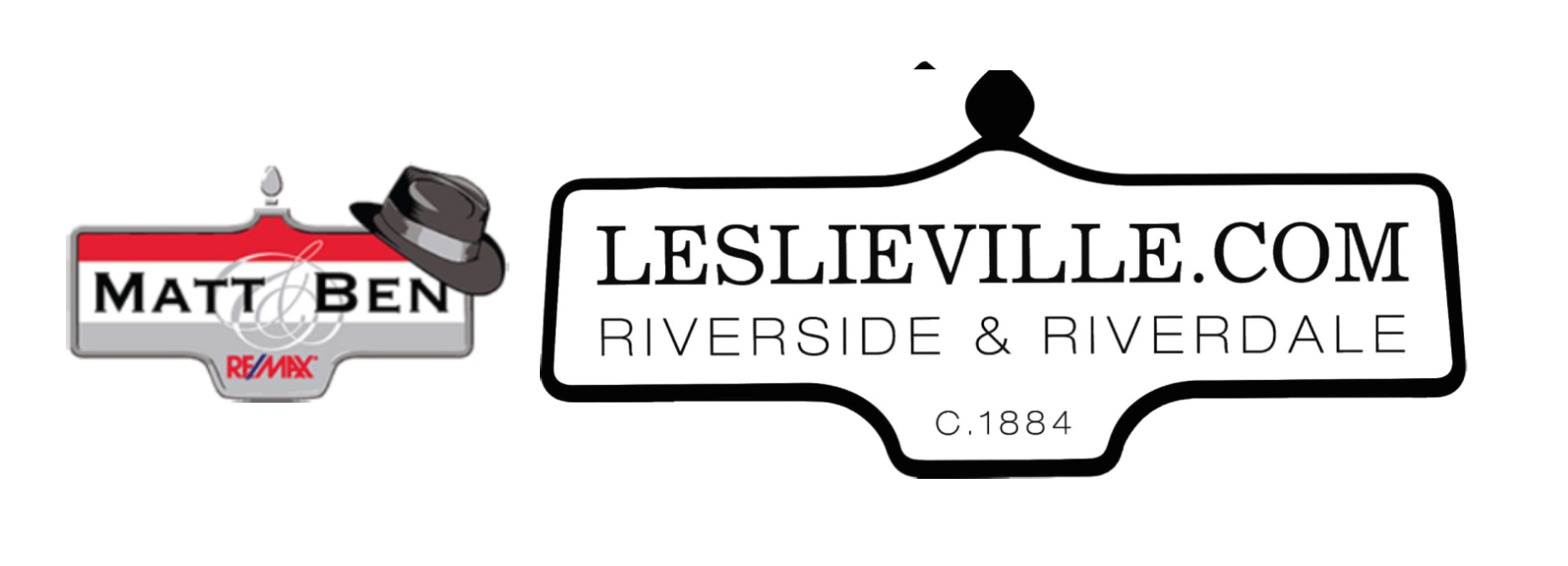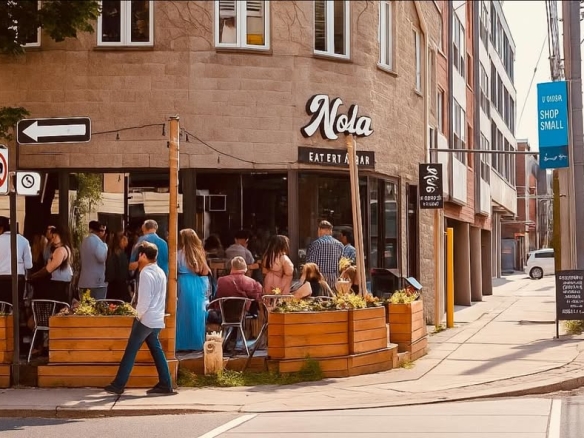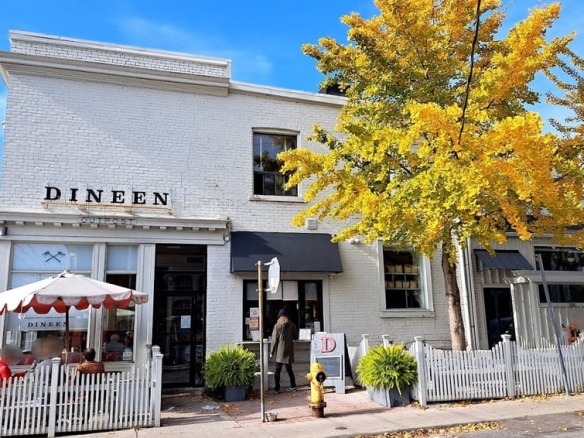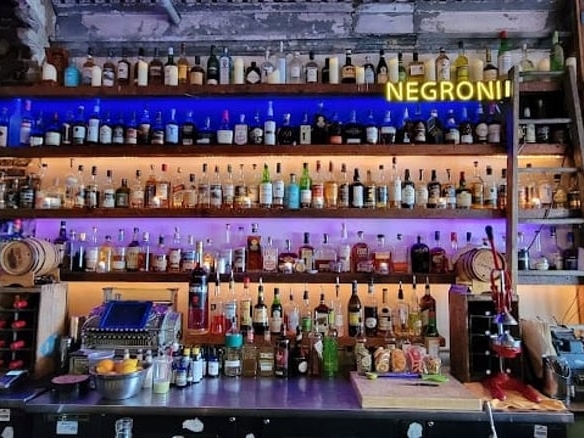This is an excerpt from Elizabeth Muirs fantastic recently published book: Riverdale : East Of The Don
It is used with the authors permission. Please buy a copy to find out the history of your street (and neighbourhood) and at the same time support a great local author!
Galt Avenue — Named for John Galt, secretary of The Canada Co., or his son, Sir
Alexander Tilloch Galt, “Father of Confederation,” MP from 1867–72, minister of finance in
1867, and high commissioner to the United Kingdom.320
Garnock Avenue — Possibly named by Scottish settlers for the Garnock River in
Scotland or the small village of Garnock.
Gerrard Street — Named for the Gerrard family, especially the Irish businessman
Samuel Gerrard who was a friend of the receiver general, Captain John McGill. One of the
famous residents on Gerrard Street, although for a very short time, was Grand Duchess Olga
Alexandrovna. Sister of Tsar Nicholas II, Olga lived her last days in Riverdale, sharing aa small
apartment at 716 Gerrard Street East with friends, a Russian couple named Colonel Konstantin
and Sinaida Martemianoff. Not long before, Olga had been a guest on board the Royal Yacht
Britannia when Queen Elizabeth visited Canada in 1959. Olga had married twice; her second
husband, Colonel Nikolai Kulikovsky, was a cavalry officer. They and their two sons, Guri and
Tikhon, fled from St. Petersburg to the Crimea in 1917, after Olga’s brother and his family were
assassinated during the Russian Revolution. They continued on to Denmark in 1920. In 1948
they immigrated to a farm in Ontario. Nikolai died in 1958. An accomplished artist, Olga’s
paintings are in collections and museums around the world. She is quoted as saying, “If I ever
start crying, I will never stop.” Gerrard Street East from the Don River to Broadview was
formerly called Josephine Street; from Broadview to Blong Street it was called Rambler’s
Gertrude Place — Named for H. R. Frankland’s daughter Gertrude. The Frankland
family settled at Pape and Danforth in 1858. Frankland was a prominent livestock exporter.322
Glebeholme Boulevard — Named because it is on church lands. Glebe refers to the
church and lands were set aside for Protestant churches, or “clergy reserves.”
Gough Avenue — Named for the Gough family from Ireland. Thomas Gilbert Gough
was a cattle dealer; he married Susan Ann Armstrong and they had three children. Richard
Patrick Gough was a prominent business man. The Goughs had a dairy on Gough Street in the
early 1900s. Gough Street was originally called Moscow. Much earlier, in 1808, Thomas B.
Gough, possibly a relative, was elected a member of the legislative assembly.323
Graham Place — Named for Alderman Robert H. Graham for Ward 5 in 1891, 1892,
and 1895–99.324
Greig Avenue — Possibly for a resident of Scottish origin. A labourer, Willliam Greig
lived in Riverdale; however an Anne Poulter notes that “Gregg Avenue” was named after her
mother-in-law’s father who built city hall. E. J. Lennox was the architect for this building; John
Elliott is listed as “builder,” with numerous crafts and trades people involved.325
Grandview Place — Is a descriptive term.
Grant Street — Named for Hon. Alexander Grant, administrator of Upper Canada from
1805–06, until a lieutenant governor could come from Great Britain after Peter Hunter’s death;
or for Minnie Forsyth-Grant. See Minnie Caroline Robinson Forsyth-Grant in “Women in
Riverdale.”
Greenwood Avenue — See Kate Greenwood in “Women of Riverdale.” It has also been
suggested that there was a gardener of that name in the area.326
Hamilton Street — Named for William Hamilton Jr., city councillor in1865; alderman
from 1870–5. The street was formerly known in part as Harris Street.327
Hampton Avenue — Possibly for the old town of Hampton on the Thames in England.
Harcourt Avenue — Likely for settlers from Harcourt, England, a town in Cornwall.
Harriet Street — For Harriet Wharfe who married Mr. Morley, a brickmaker in the
1850s, or Harriet Hastings, daughter of Thomas Hastings.328
Hastings Avenue — Named for Thomas Hastings, alderman 1883–86; a blacksmith and
axemaker.329
Hazelwood Avenue —A descriptive term. Evidently there were hazelnut trees in the
Heward Avenue — Named for Francis Heward who came to York in 1812, a member of
the “Family Compact;” the family had a farm in the 1830s.330
Hiltz Avenue — Named for William Wesley “Bill” Hiltz who, in his later years, lived at
682 Broadview — one of the many houses he had previously built; he was chairman of the
Toronto Board of Education, city alderman and controller, and mayor of Toronto in 1924–25. He
was active at Danforth Methodist Church where for twenty-five years he and his son Bill were
superintendents of the largest Methodist Sunday school in Canada. Before he became mayor,
Hiltz Sr. changed his last name from Hilts to Hiltz. He married Annie E. Laidlaw on Christmas
Day in 1899. They had at least seven children including Delbert, Elizabeth, John W., Blanche,
Bill, Margaret, and twins Jean and June.
Born on a farm near Erin, Ontario, Hiltz became a high school teacher and principal,
farming 140 acres at the same time; then a building contractor and real estate developer. When
he was still teaching, he would take some of his students out to construction sites to have them
help dig foundations by shovel —this was before digging was done by machine. He built more
than 500 houses in the east end of Toronto, developed a store and apartments on the Danforth,
and eventually owned so many buildings that he paid more city taxes than any other Torontonian
— except Timothy Eaton. He introduced time clocks for city workers, and promoted the building
of the new Union Station when he was mayor.331
In his later years, Hiltz was given doctor’s orders to rest, eat sparingly and do very little
because of a heart condition, so he grew flowers, studied English and history, and published two
small books of poems “to make the best of it.” His humorous poem, “The Doctor’s Orders,” ends
with this verse:
[BLOCKSTARTBLOCKBLOCKSTARTSTART]But worst of all
he tells me, with vigour in his tone,
I must curtail my eating and leave some things alone;
And when I question closely what ‘tis he’ll not condone,
He mentions things I’m fond of, which causes me to groan;
Now, since the genial Doctor weighs sixteen even stone,
Why should he wish his patient reduced to skin and bone?332
[ENDBLOCK]
Hogarth Avenue — Named for Thomas Hogarth, a local school principal at Boulton
Avenue School. Hogarth’s property remained in the family for over eighty-five years; later
it was allowed to run down but it is now gradually being restored. The original wood
flooring and large fireplaces still exist. George Hogarth, a grocer from England, also lived
on Hogarth and owned a lot of property in the area. He married Harriet McClure; they had
two daughters and one son. The street was formerly known as Wilson Street.333 [IMAGE 9-
One of Canada’s most famous painters, Owen Staples and his artist friend C.W. Jefferys
designed Staples’ “Arts and Crafts” house at 69 Hogarth. Charles William Jefferys’ father used
brick rejects to build the house; it cost $2,800 to build. The place was host to many well-known
artists, among them, A.J. Casson who was invited to join the “Group of Seven.” There was an
“Open House” every Sunday.334
Staples painted the people, places, and events of Canada. Of his painting entitled
Construction of the Wilton Avenue Bridge, 1910(now Dundas Street),it was written, “No one has
ever painted a more glorious canvas than this fabulous impressionist masterpiece from an artist at
the peak of his form, turning an ugly mechanical spectacle of industrial mayhem into a feast for
eyes in every part of the canvas.”335
Staples came to Canada when he was three. He was always drawing — birds, flowers,
and animals. His father died when he was ten and his mother had to care for eight children
between the ages of one and eleven. She ran a private kindergarten and gave music lessons,
teaching her children to sing as well. Later, Owen sang in the Mendelssohn Choir for fifty-five
years. His mother died when Owen was fifteen; he and his brother Johnny found a number of
odd jobs but for a whole week at least they lived on the street. Eventually he was given a job as a
messenger boy at the Rochester Art Club in New York state where they were living at the time.
Staples used various media such as oil, watercolour, pastel, mezzotint, and pen and ink.
His cartoons and illustrations for the Toronto Evening Telegram were signed Rostap — a
contraction of Jack Robinson, editor, and Staples, or not at all. He worked there for fifty years,
but was never allowed to sign his name on his work; no one was to be a star at the paper.
Danforth Baptist Church at 60 Bowden Street, not far from Staples’ home, contains a
large painting by him commemorating the men from that church who died in the First World
War. Staples was the choirmaster there.336
In the mid-1940s Staples suffered a stroke that left him without the use of his right arm.
Undeterred, he trained himself to use his left hand. [IMAGE 9-18] He was married to Lillian
Hewitt, daughter of alderman William Hewitt, a hardware merchant.
Howland Road — Named for Sir William Pierce Howland, or William Holmes
Howland, one of his sons. W.P. Howland was the only “Father of Confederation” to have been
born in the United States. He was an MLA, an MP, and the second lieutenant governor of
Ontario. W. H. Howland was president of the Board of Trade, and mayor from 1886–87. He
fought vice, prostitution, drunkenness, and slum conditions, earning Toronto the title of “Toronto
the Good.” He tried to stop the “desecration” of the Sabbath with a new police squad. But he was
also noted for his hard work. By the age of twenty-five, he was a director, president, or vice-
president of more than a dozen companies in insurance, finance, electrical services, and paint
manufacturing. He bought fifty acres to start an Industrial School for boys, and he gave away
most of his money to help the poor. In 1887, when he was up for re-election as mayor, his
opponents bought off all the taxi cabs so they couldn’t carry his supporters to vote, but the 2,000
unmarried women — with property assessed at over $400 and of voting age — who had just
been given the vote trudged through the snow on foot to polling stations, and Howland won by a
landslide. Howland married Laura Chipman in 1873; they had three daughters. Gordon Sinclair
lived on Howland Road from 1904–13.337
Howie Avenue — Possibly for settlers from Scotland. Howie is a Scottish surname.




